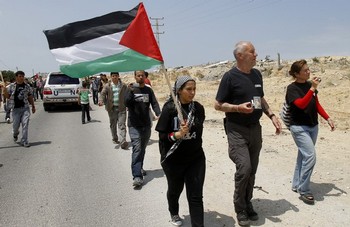Tag: Al Nakba
-
On June 5th support the Palestinian refugees’ right to return
22 May 2011 | International Solidarity Movement The right to return is a core goal of the Palestinian liberation struggle. Since 1947-1948, when over 750,000 Palestinians were forcibly expelled from their homes – and more than 700,000 were ethnically cleansed from their country altogether – they and their descendants have organized to demand the rectification…
-
Green Palestine marks Nakba day
19 May 2011 | International Solidarity Movement With the creation of Israel in 1948, four hundred and eighteen Palestinian villages were wiped out and destroyed, displacing hundreds of thousands of Palestinian people from homes they had lived in for generations. This year on May 17, in further commemoration of the Nakba (the Catastrophe), the ISM…
-
Nakba day in Gaza
18 May 2011 | International Solidarity Movement, Gaza Nakba Day. The day of the Catastrophe. A day to mark the ethnic cleansing of 800,000 Palestinians from their homes. A day to remind themselves and the world, that one day, they will return to their homes, that they have not forgotten their land. Today marked 63…

